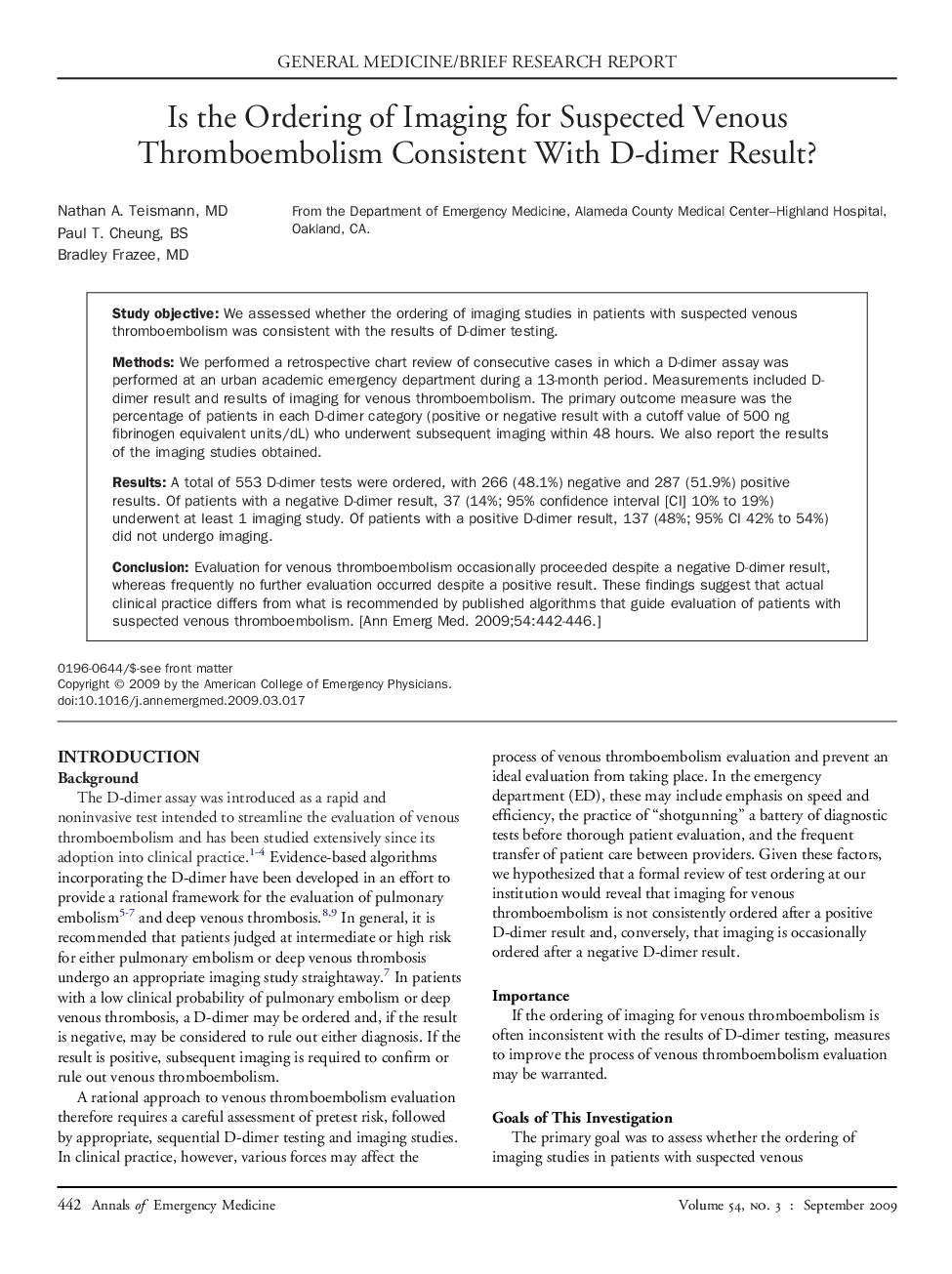| Article ID | Journal | Published Year | Pages | File Type |
|---|---|---|---|---|
| 3232071 | Annals of Emergency Medicine | 2009 | 5 Pages |
Study objectiveWe assessed whether the ordering of imaging studies in patients with suspected venous thromboembolism was consistent with the results of D-dimer testing.MethodsWe performed a retrospective chart review of consecutive cases in which a D-dimer assay was performed at an urban academic emergency department during a 13-month period. Measurements included D-dimer result and results of imaging for venous thromboembolism. The primary outcome measure was the percentage of patients in each D-dimer category (positive or negative result with a cutoff value of 500 ng fibrinogen equivalent units/dL) who underwent subsequent imaging within 48 hours. We also report the results of the imaging studies obtained.ResultsA total of 553 D-dimer tests were ordered, with 266 (48.1%) negative and 287 (51.9%) positive results. Of patients with a negative D-dimer result, 37 (14%; 95% confidence interval [CI] 10% to 19%) underwent at least 1 imaging study. Of patients with a positive D-dimer result, 137 (48%; 95% CI 42% to 54%) did not undergo imaging.ConclusionEvaluation for venous thromboembolism occasionally proceeded despite a negative D-dimer result, whereas frequently no further evaluation occurred despite a positive result. These findings suggest that actual clinical practice differs from what is recommended by published algorithms that guide evaluation of patients with suspected venous thromboembolism.
